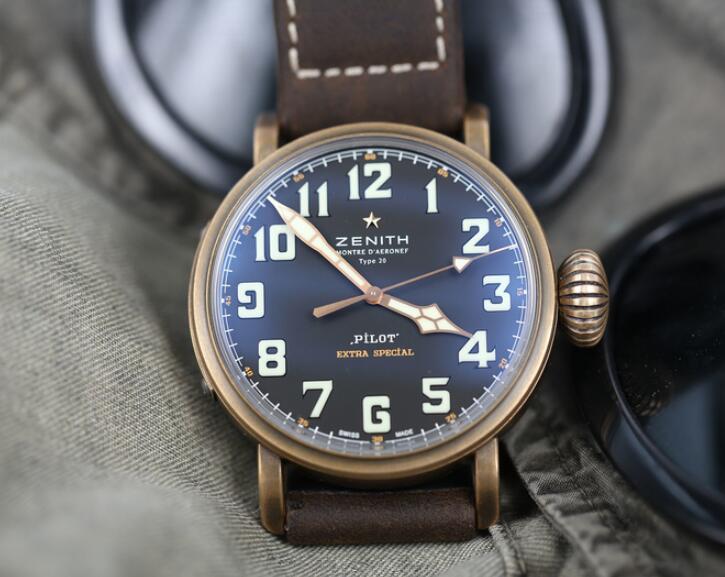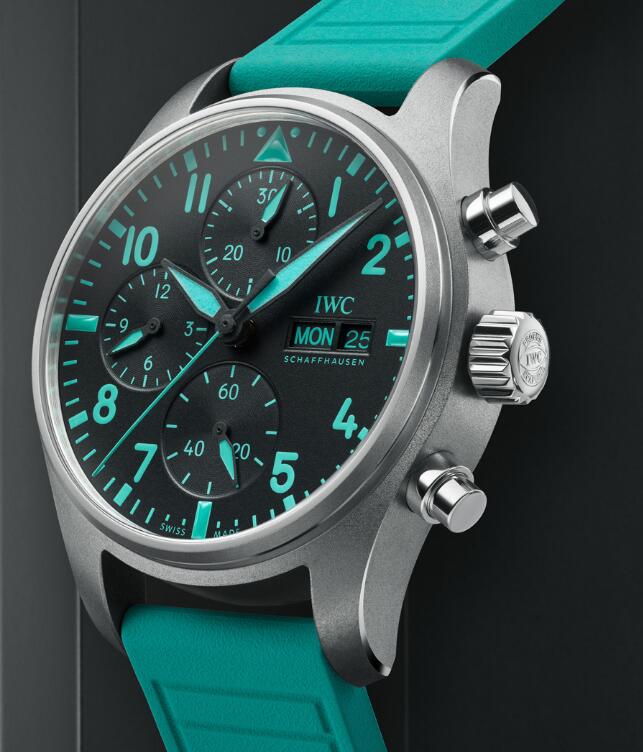Another complication that copy Patek Philippe is also well known for is the annual calendar. 1996 was an extraordinary year for Patek Philippe. It brought all its watchmaking capabilities under one roof at Plan-les-Ouates in Geneva, where Philippe Stern launched the famous annual calendar. He is undoubtedly proud that Patek Philippe introduced the perpetual calendar to the world more than 70 years ago. But he also hopes his tenure at Patek Philippe will be marked by true innovation.
Before we start to understand the history of the Patek Philippe Annual Calendar, let us first define what a perpetual calendar is. Ever wonder where our calendar system came from? All thanks to a Pope named Gregory XIII, who formulated the Gregorian calendar in 1582, correcting errors in the Julian calendar. The problem is essentially this: the calendar year is divided into 24 hours a day, 7 days a week, and 30 or 31 days a month, and February has 28 days, for a total of 365 days, which is actually shorter than the solar year, which is how the earth orbits The time it takes the sun to make one revolution – 365 days, 5 hours, 48 minutes and 46 seconds to be exact. To make up for this, Pope Gregory XIII adds the date of February 29 every four years. But this in turn causes a slight overage, so every 100 years, while divisible by four, leap days are ignored. Every 400 years, it is put back in its place.
Still here with me? OK So to set up a perpetual calendar mechanism to keep track of the day, the day, the 30/31 day cycle of the compensating month, to know when February has 28 days and to know when to have 29 days, it would be a behavioral extreme case of clockwork Bad thing, right? Well, it just so happened that an English watchmaker named Thomas March did just that in 1762. In 2016, that watch was auctioned off and acquired by Patek Philippe, the most famous watch brand on the planet. This is very appropriate, because in the history of modern watchmaking, there is no brand more synergistic than a perpetual calendar watch. Patek Philippe was the first to create a perpetual calendar in 1925, the retrograde perpetual calendar in 1937 and the series perpetual calendar in 1941 with the legendary Ref. 1526. in 1944 as Ref. 1591 and in 1951 with Ref. 2497. It was also the first from 1962 with the iconic Ref. 3448; another Swiss watchmaker took a full 16 years to achieve this achievement. In addition, Patek Philippe was the first to create a perpetual calendar chronograph in 1941. It was also the first to start in 1962 with the iconic Ref. 3448; it took another Swiss watchmaker a full 16 years to achieve this achievement. In addition, Patek Philippe was the first to create a perpetual calendar chronograph in 1941. It was also the first to start in 1962 with the iconic Ref. 3448; it took another Swiss watchmaker a full 16 years to achieve this achievement. In addition, Patek Philippe was the first to create a perpetual calendar chronograph in 1941.
The interesting thing about creating the almanac is that it was seen as a challenge in 1991, or more specifically, the subject of a diploma at the Geneva School of Engineering. The idea was to create a new calendar system that eliminated the fragile racks, cams and jumper springs of the perpetual calendar, and largely replaced them with gears. The resulting system, which Patek Philippe patented, was at the heart of its innovation the 24-hour drive wheel. This has two “fingers” at an angle to each other. Fingers advance the date once a day. The second finger is used for the transition from the 30th day to the 1st of the next month, allowing you to skip the 31st. In this case, the full conversion took four hours to complete. Interestingly, in designing Ref. 5326, Patek Philippe was very clear that in a multi-time zone watch with a date function, a long transition period is unacceptable. More on that later. In any case, the main simplification represented by the almanac is that it no longer needs to predict the 48-month leap year cycle or add a day to February when a leap year occurs, saving a lot of mechanical costs.
Ref. was launched in 1996. The 5035 Calendar was an instant hit for under $20,000. In addition to the use of luminous hands, the sporty case appeals particularly to younger audiences. It was an all-around success for Patek Philippe. On the 10th anniversary of the 2006 calendar, the complication was placed in two of the watches most relevant today. The first is a reference. When the 5396 was introduced in 2006, it represented the first Calatrava annual calendar. The second is a reference. 5960, an excellent automatic vertical clutch chronograph with an annual calendar, although one of the side tables is a wonderful Nautilus annual calendar reference. 5726.
This new Calatrava brings together two famous complications, giving Patek Philippe the opportunity to enhance its performance. As mentioned earlier, ref. The 5326 is the second watch to integrate the local time setting function into the crown, the first being the 2021 Aquanaut Luce Travel Time.
Says Thierry Stern: “With this new Calatrava Annual Calendar Travel Time beautifully decorated with Paris studs, I didn’t want to add pushers around the case that would interrupt this special decoration.” Instead, the crown has three positions For winding, setting local time and semi-quick setting date/calendar information, as well as setting time for local and local time sync, with a hacking feature. To adjust to a new time zone, all you have to do is move the crown to the neutral position and turn the hour hand backwards or forwards. In this position, the seconds hand continues uninterrupted, allowing you to set the local time without affecting the overall accuracy of the watch.
refer to. The 5326 also makes up for an important factor. For example, let’s say you’re flying from Singapore to New York. When you arrive at JFK, you turn your watch back 12 hours. However, during the flight, you may have crossed the midnight threshold, which means that you arrive on a date and date that is actually earlier than what is shown on your watch face. But fear not, because when you turn the hour hand in the opposite direction past the midnight threshold, the date and week display (and the affected month) also change back to the previous day.
This isn’t the only innovation Ref represents. 5326. One of the beauties of Patek Philippe is that it keeps improving its watches. In the first example of the almanac, the transition from the 30th to the 1st takes four hours to complete. In newer versions, this conversion takes 90 minutes.
The question is of course the question, what if you try to change your local time during this transition? Inconsistencies between date and calendar information may occur. correct? Patek Philippe recognized this with its usual thoroughness and set out to create a mechanism that would make date transitions five times faster. It now takes about 18 minutes. This comes down to a cam system with partial teeth attached to the hour wheel. The 24 hour wheel now completes its rotation in four distinct phases – 180 for 3 hours (close to midnight), 9 hours at rest, then another 3 hours at 180 degrees (near noon), and then 9 hours at rest.
This improves the coordination of the calendar switching phase with local time, Patek explained. All in all, the 31-260 PS QA LU FUS 24H movement has a total of eight new patents. The first is the three crown positions for time setting. The system has a lever that actually closes “dead” wheels that are not performing any function, to save energy. The second is the forward and backward setting function of the annual calendar, thanks to the teeth and springs on the month lever. This allows the watch to transition from the 30th to the 1st and back from the 1st to the 30th without getting the dates out of sync. The third is a linear time zone spring that increases the torque between the local time hour wheel and the local time hour wheel. The fourth and fifth are used for two pivotable retaining cleats that hold the date plate in place without the use of a center screw. The sixth is an inertia increment, which prevents inadvertent misalignment of the time display when correcting time zones. The seventh item concerns the braking mechanism for the date disc when corrections are made. The eighth is a flexible corrector. The flexibility of these leaf springs means you can eliminate the risk of material failure when correcting within an unfavorable time window. Philip Barat, Patek Philippe’s technical director, said: “We realized that people really don’t want to read instructions anymore. So we had to create a watch that would block certain functions to prevent them from being manipulated by mistake.” The sixth is inertia increase This prevents inadvertent misalignment of the time display when correcting the time zone. The seventh item concerns the braking mechanism for the date disc when corrections are made. The eighth is a flexible corrector. The flexibility of these leaf springs means you can eliminate the risk of material failure when correcting within an unfavorable time window. Philip Barat, Patek Philippe’s technical director, said: “We realized that people really don’t want to read instructions anymore. So we had to create a watch that would block certain functions to prevent them from being manipulated by mistake.” The sixth is inertia increase This prevents inadvertent misalignment of the time display when correcting the time zone. The seventh item concerns the braking mechanism for the date disc when corrections are made. The eighth is a flexible corrector. The flexibility of these leaf springs means you can eliminate the risk of material failure when correcting within an unfavorable time window. Philip Barat, Patek Philippe’s technical director, said: “We realized that people really don’t want to read instructions anymore. So we had to create a watch that would block certain functions to prevent them from being manipulated by mistake.” Brake mechanism for the date disc when correcting. The eighth is a flexible corrector. The flexibility of these leaf springs means you can eliminate the risk of material failure when correcting within an unfavorable time window. Philip Barat, Patek Philippe’s technical director, said: “We realized that people really don’t want to read instructions anymore. So we had to create a watch that would block certain functions to prevent them from being manipulated by mistake.” Brake mechanism for the date disc when correcting. The eighth is a flexible corrector. The flexibility of these leaf springs means you can eliminate the risk of material failure when correcting within an unfavorable time window. “We realized that people really don’t want to read instructions anymore,” said Philip Barat, Patek Philippe’s technical director. “So we had to create a watch that would block certain functions to prevent them from being manipulated by mistake.” of people don’t want to read the instructions anymore. So we had to create a watch that would block certain functions to prevent them from being operated incorrectly.” “We realized that people really didn’t want to read the instructions anymore. So we had to create a watch A watch that blocks certain functions to prevent them from being operated incorrectly.”
All in all, the design and technological innovation that Ref. stands for. The 5326 makes it one of the most important timepieces in recent memory. best copy watches

